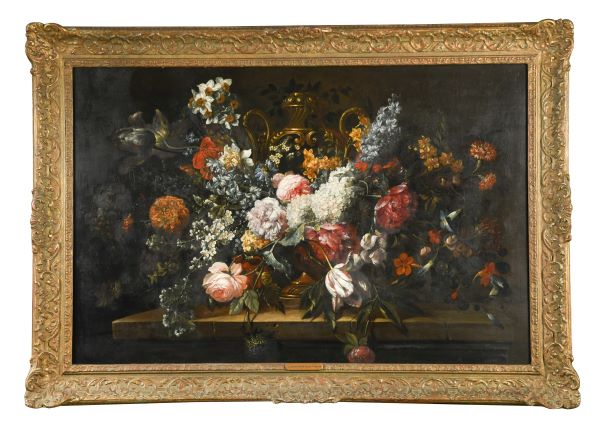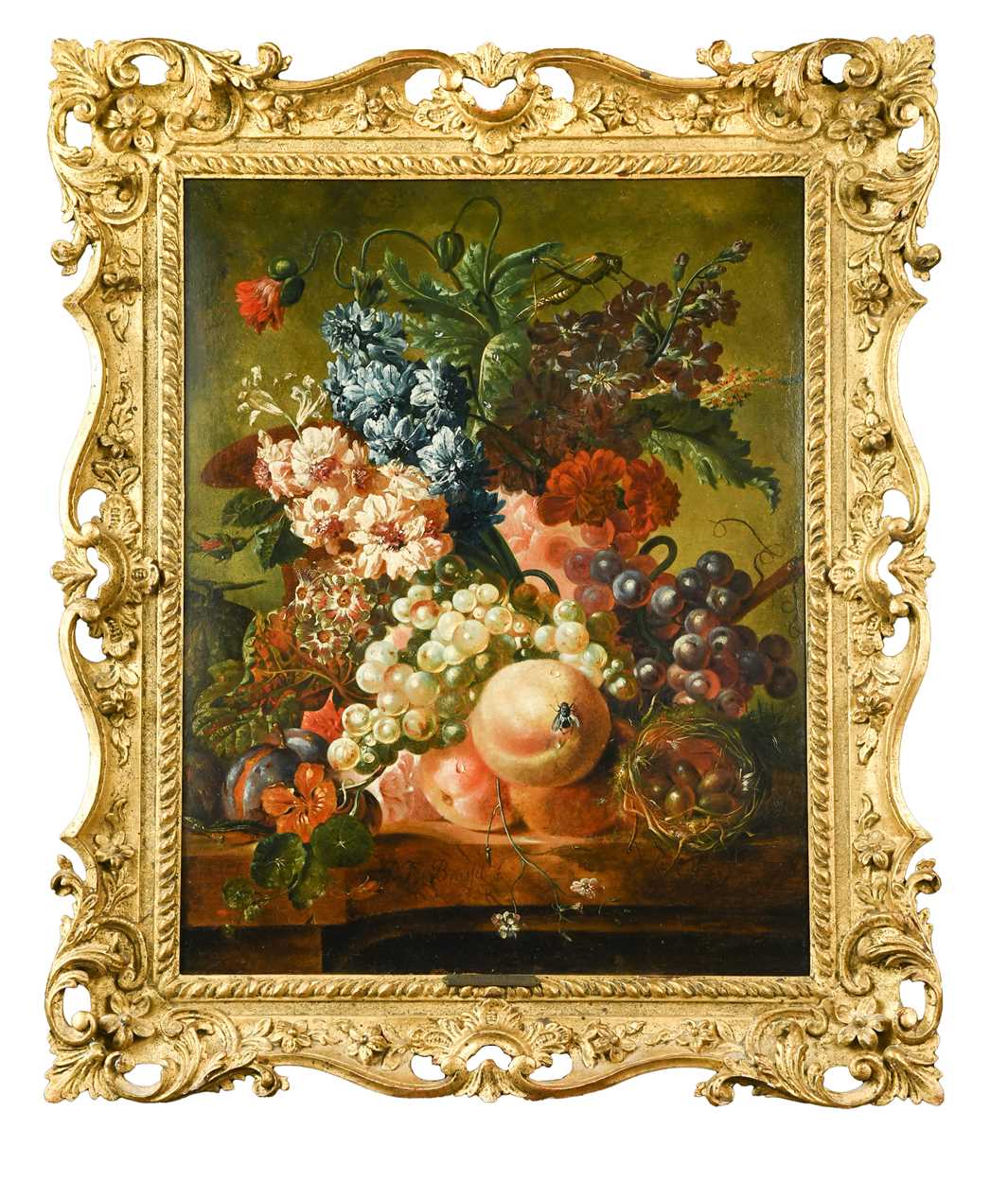

Luke Bodalbhai comments on the history and enduring appeal of still life paintings and previews some still life highlights from the forthcoming September Fine Sale.
01/08/2024 Fine Art
Although the earliest examples of still life painting can be traced back to Ancient Rome, it wasn’t until the 17th century that the genre blossomed in its own right. This occurred across Europe, including countries such as Italy and Spain, but it was the Low Countries that saw a particular proliferation of artists specialising in still lifes.
In Dutch and Flemish society, the rise of a wealthy middle class who desired art works to decorate their homes at a time of rapid urbanisation, combined with the increased demand for secular subjects following the Reformation, brought about a ‘golden age’ of still life painting.
The Antwerp born Gaspar Peeter Verbruggen the Elder (1635-1681) and his son Gaspar Peeter Verbruggen the Younger (1664-1730), were both floral still life specialists. A large and impressive work by Verbruggen the Younger is one of the highlights of Cheffins’ Fine Sale in September - pictured here:

Estimated at £7,000-10,000, the painting, depicting an elaborate bouquet of flowers on the stone ledge with a gilt urn, represents the development of a more decorative style in late 17th century Flemish still life painting. Indeed, its broad impasto brushwork indicates the influence of Italian artists such as Mario Nuzzi and Michele Pace del Campidoglio.
Interestingly, Verbruggen has signed the work ‘Gaspar Pedro Verbruggen’ and was often also known as Gasparo Pedro Verbruggen – possibly both a nod to Italy and also Spain, given its strong links with Flanders.
However, Verbruggen was to leave Antwerp for the Dutch Republic where the dominance of Protestantism had resulted in an even stronger demand for still life subjects which continued well into the 18th century.
This is highlighted by another still life in Cheffins’ September sale by the 18th century Dutch painter Paul Theodor van Brussel (1754-1795), estimated at £10,000-15,000 (pictured below). The work is both highly decorative and extremely colourful, a reflection of the artist’s initial training in tapestry and wall painting.

Nevertheless, the inclusion of the fly (symbolising decay) and lizard (symbolising death) add a darker element to the picture and place it within the strong Dutch tradition of ‘vanitas’ still life painting, which often used such symbols to subtly suggest the transience of life and certainty of death. Unfortunately, this was brutally true for van Brussel, who drowned ice skating at the age of 41.
Luke Bodalbhai, Old Master, British & European Art Vauler and cataloguer at Cheffins, comments: “Still lifes have continued to be popular amongst artists and collectors alike, right up until the present day. Their ability to provide beautiful representations of everyday objects has had enduring appeal at Cheffins' sales for buyers wishing to decorate their homes, whilst the symbolism and historic features of earlier works are often attractive to academic collectors across the globe.”